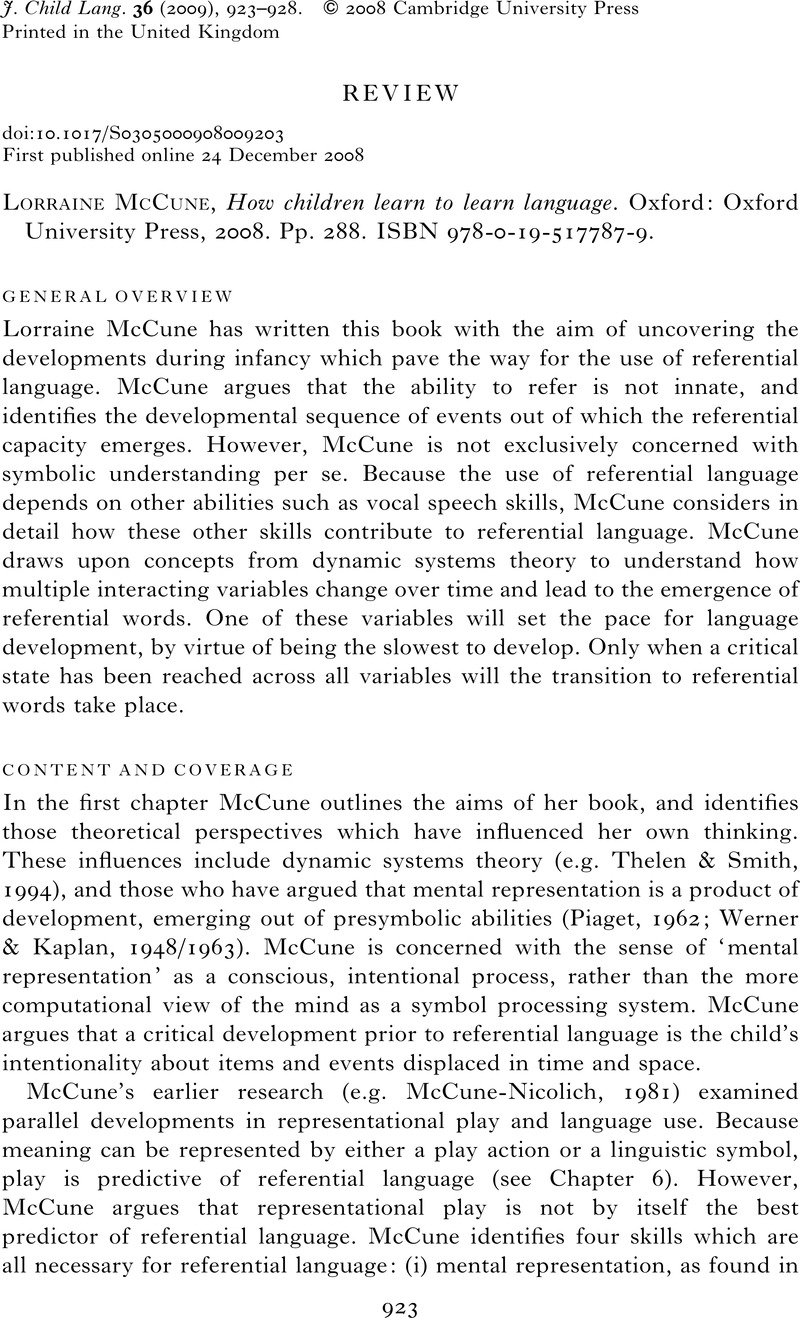No CrossRef data available.
Article contents
Lorraine McCune, How children learn to learn language. Oxford: Oxford University Press, 2008. Pp. 288. ISBN 978-0-19-517787-9.
Published online by Cambridge University Press: 24 December 2008
Abstract
An abstract is not available for this content so a preview has been provided. Please use the Get access link above for information on how to access this content.

- Type
- Reviews
- Information
- Copyright
- Copyright © 2008 Cambridge University Press
References
REFERENCES
Akhtar, N. & Tomasello, M. (2000). The social nature of words and word learning. In Golinkoff, R. M. & Hirsh-Pasek, K. (eds) Becoming a word learner: A debate on lexical acquisition, 115–135. New York: Oxford University Press.CrossRefGoogle Scholar
McCune, L. (1995). A normative study of representational play at the transition to language. Developmental Psychology 31, 198–206.CrossRefGoogle Scholar
McCune-Nicolich, L. (1981). Toward symbolic functioning: Structure of early pretend games and potential parallels with language. Child Development 52, 785–97.CrossRefGoogle Scholar
Thelen, E. & Smith, L. B. (1994). A dynamic systems approach to the development of cognition and action. Cambridge, MA: MIT Press.Google Scholar




